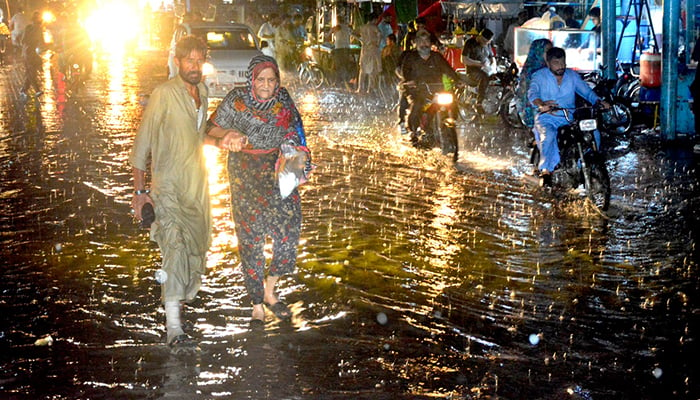In an unexpected twist of meteorological events, the cities of Karachi and Hyderabad are set to experience another day of significant rainfall. Regions that have been grappling with continuous precipitation are now bracing for additional showers, raising concerns among residents and authorities alike. This article delves into the current weather conditions affecting these urban centers, the causes behind the persistent rain, and the potential impacts on daily life and infrastructure.
Current Weather Conditions
The Pakistan Meteorological Department (PMD) has forecasted that Karachi and Hyderabad will continue to receive rain throughout the day. This follows a pattern of intermittent showers observed over the past week, resulting from a series of low-pressure systems moving across the region. These systems, combined with humidity from the Arabian Sea, have created conducive conditions for sustained rainfall.
Residents of Karachi woke up to overcast skies and a light drizzle, while Hyderabad experienced heavy showers early in the morning. Meteorologists report that the rainfall is expected to intensify in the afternoon and may continue into the evening. The PMD has also issued warnings for isolated thunderstorms, urging citizens to exercise caution and stay informed about the latest weather updates.
Causes of Prolonged Rainfall
The recent spell of rain can be attributed to several meteorological factors. Firstly, there’s a low-pressure area that has developed over the Arabian Sea, which is funneling moist air into southern Pakistan. Secondly, the seasonal monsoon winds, which typically affect the region from June to September, have extended their influence into October this year. Coupled with an unusual shift in wind patterns, these factors are leading to prolonged wet conditions.
Climate experts suggest that global climatic changes may be influencing this extended monsoon season. While the monsoon rains are a natural phenomenon, variations in their intensity and duration could be linked to larger patterns of climate change affecting South Asia. Such anomalies are becoming more frequent, necessitating adaptive measures from both the government and the public.
Impact on Daily Life
The continuous rain has disrupted daily life in both Karachi and Hyderabad. Streets in both cities have experienced waterlogging, causing traffic jams and hindering the movement of people. The situation is particularly dire in low-lying areas, where poor drainage systems exacerbate the problem, leading to flooded homes and businesses.
Public transportation has been thrown into disarray, with buses and trains experiencing delays and cancellations. Many commuters are finding it challenging to reach their destinations, leading to increased frustration and anxiety. Additionally, the rain has affected commercial activities, with shops and markets witnessing reduced footfall as people opt to stay indoors.
For the city’s vulnerable populations, the rain has added another layer of difficulty. In Karachi, where informal settlements are prevalent, the risk of disease outbreaks due to stagnant water is a pressing concern. Health officials are on high alert, advising citizens to take precautions against diseases such as dengue and malaria, which thrive in wet conditions.
Infrastructure Challenges in Karachi
The relentless rain poses significant challenges to urban infrastructure, highlighting vulnerabilities in drainage systems and road networks. Karachi’s infrastructure, in particular, has struggled to cope with the volume of rainwater. The city’s aging drainage system is unable to efficiently channel the excess water, leading to flooding and frequent power outages.
Hyderabad faces similar issues, with many areas experiencing prolonged waterlogging due to inadequate drainage facilities. Local authorities are working round the clock to mitigate the impact, deploying teams to clear blocked drains and repair damaged roads. However, the scale of the problem requires long-term solutions and investment in resilient infrastructure to prevent future occurrences.
Preparedness and Response
In response to the ongoing rain, the Sindh provincial government has activated emergency protocols. Teams are on standby to assist residents in affected areas, providing relief materials and conducting rescue operations where necessary. The government has also urged citizens to remain vigilant and report any emergencies to the relevant authorities.
Schools and educational institutions have been advised to remain closed until conditions improve, prioritizing the safety of students and staff. Meanwhile, the PMD continues to monitor the weather patterns closely, updating forecasts to provide timely information to the public.
Looking Ahead
As Karachi and Hyderabad brace for another day of rain, it is crucial for residents and authorities to remain prepared and informed. The current weather situation serves as a reminder of the need for better infrastructure, comprehensive planning, and adaptive strategies to cope with changing climatic conditions.
Topics #featured #trending pakistan




